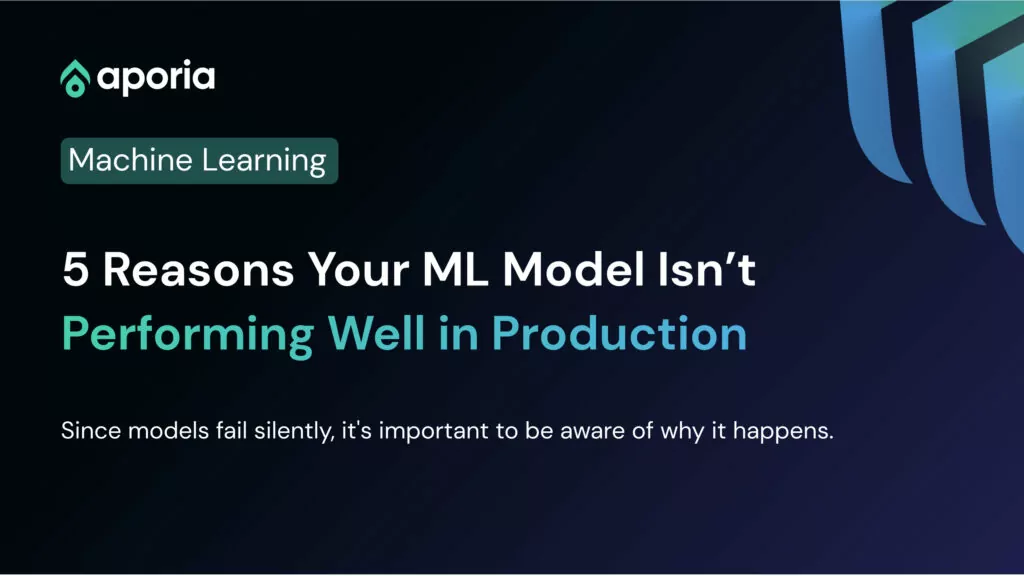
4 Reasons Why Machine Learning Monitoring is Essential for Models in Production
Machine learning (ML) is a field that sounds exciting to work in. Once you discover its capabilities, it gets even...
Aporia has been acquired by Coralogix, instantly bringing AI security and reliability to thousands of enterprises | Read the announcement
Drive Responsible AI with Aporia, ensuring your AI is secured, its risks are managed, and that you’re in compliance with the upcoming EU AI Act:
The EU AI Act is a pioneering legislative framework designed to regulate artificial intelligence across the European Union. Its primary aim is to ensure AI technologies are developed and used in a way that is safe, ethical, and respects fundamental rights. Key highlights include the categorization of AI systems based on their risk levels, from minimal to unacceptable risks, with specific emphasis on privacy and security in AI. This Act is a response to the growing integration of AI in various sectors and its potential impacts on individuals’ rights and societal norms.
The Act mandates strict compliance requirements for high-risk AI systems, focusing on transparency, data governance, human oversight, and robustness. It underscores the EU’s commitment to setting a global standard for AI regulation, ensuring that AI systems do not compromise individual privacy, data security, or lead to discrimination. Organizations deploying AI technologies in the EU, or affecting EU citizens, will need to adhere to these regulations, regardless of where they are based.
of global annual turnover or €30 million for violations related to prohibited AI practices.
of global annual turnover or €20 million for failing to comply with requirements for high-risk AI systems.
of global annual turnover or €10 million for non-adherence to data and privacy protection standards.
based on the severity of non-compliance, with specific caps for SMEs and startups to ensure fairness.
As an organization building or using AI systems, you will be responsible for ensuring compliance with the EU AI Act and should use this time to prepare.
Compliance obligations will be dependent on by the level of risk an AI system poses to people’s safety, security, or fundamental rights along the
AI value chain. The AI Act applies a tiered compliance framework. Most requirements will be on AI systems being classified as “high-risk”, and on general-purpose AI systems (including foundation models and generative AI systems) determined to be high-impact posing “systemic risks”.
Depending on the risk threshold of your systems some of your responsibilities could include:
Initiate with a thorough risk assessment of your AI systems to gauge associated risks. Follow this by conducting conformity assessments to verify that your systems meet EU standards, either through self-assessment against EU-approved technical standards or via evaluation by an accredited body within the EU. This dual approach ensures that your AI deployments are in strict compliance from the outset.
Maintain comprehensive technical documentation and record-keeping processes as evidence of compliance and operational integrity. Elevate transparency by disclosing the nature and capabilities of your AI systems, categorized by their risk level: For prohibited AI applications, acknowledge the requirement for removal from the market due to inherent risks: For prohibited AI applications, acknowledge the requirement for removal from the market due to inherent risks.
Vigilantly monitor and adjust your AI systems to remain compliant with the EU AI Act, especially when substantial modifications alter the system’s intended purpose. This requires a flexible and responsive approach to governance, ensuring that changes by either the original provider or third parties do not compromise compliance or introduce new risks.
Integrating these strategies into your AI governance framework positions your organization not just for compliance, but for leadership in ethical AI use. This proactive and comprehensive approach to risk assessment, conformity, documentation, transparency, and ongoing compliance monitoring underscores a commitment to the highest standards of AI safety, security, and responsibility.
Aporia adapts AI Guardrails to meet the unique compliance and risk management needs of every AI application, ensuring seamless alignment with the evolving EU AI Act requirements.
Aporia Guardrails is constantly updating with the best hallucination and prompt injection policies.
With Aporia, simplify the journey to EU AI Act compliance by upholding the highest AI security and privacy standards, fostering innovation with confidence, and building trust among users and stakeholders.

Machine learning (ML) is a field that sounds exciting to work in. Once you discover its capabilities, it gets even...

We’ve all been there. You’ve spent months working on your ML model: testing various feature combinations, different model architectures, and...

Looking for ML observability alternatives to Arize AI? Check out these 9 solutions to help you get the most out...